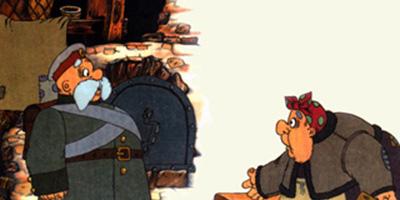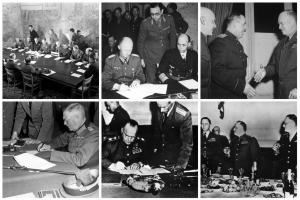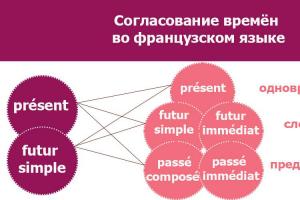Each of us has the right to choose what we will do in life. This refers to intellectual and mental work. Some people are good at exact sciences, such as mathematics or chemistry, even from school, while others are attracted to creative activities. So, “golden hands” also need to be developed.
Each of us remembers those labor lessons that happened before. They are significantly different from modern ones. Then the time was different, and the equipment of labor rooms was at a higher level. Some people have positive memories from labor lessons, while others do not want to remember those times, believing that they are a thing of the past. Agree that a lot depends on the teacher. It’s good when a mentor recognizes a creative personality in his student in time and will help him and root for him. But it happens that a child needs to develop independently, without anyone’s help. Today, students have completely different hobbies, but this does not mean that there are no creative children among them who love to invent and make things.
The question arises: is there any benefit from labor lessons in schools? Is this item necessary? Perhaps no one needs him anymore? Many people believe that in a few years this subject will no longer exist. Who needs to know how to hammer nails or use a plane? Most modern people believe that there are special services for this that will do everything that is needed for money. And in the online store http://domisad.com.ua/ you can buy all the necessary tools that you need for your home, office, garden or small city apartment.
In most cases, labor lessons are given by unskilled craftsmen, so these hours should be given to studying some other subjects. Workshops in schools are not in the best condition. There are no materials or modern tools. Why then waste time on an item that no one needs?
Everyone has the right to their opinion. Undoubtedly, labor lessons bring a lot of benefits. Children can take a break from more challenging subjects that tire them mentally. Labor lessons provide basic skills that will definitely be useful in life. And you can find flaws in everything if you look hard enough. Few parents are outraged by the lack of labor lessons at school. But everyone wants their child to develop comprehensively and forget that physical labor contributes to a person’s mental development.
VKontakte
Classmates
Other news
School is easy and fun. Help your child love school.
Often, parents forget that they need to prepare their child for school not only by buying him books and equipment, but also morally. How to get your child interested in school? A few tips will help you with this.
11 ways to learn to think positively
Throughout our lives we are taught mathematics, foreign languages, history, but we are not taught the main thing - to be happy people. Happiness is positive thinking, which can actually be learned. You just have to want it, and our brain will produce positive emotions at the first signal, as soon as we need them.
Social media makes children unhappy
Researchers from the UK have concluded that adolescents' self-esteem largely depends on the amount of time spent on social networks.
How to stop craving sweets?
There is an effective method that can reduce the desire to eat sweets. In a study conducted by American scientists, it was found that the level of sweet tooth can be reduced in just 25 seconds.
Stop Doing These 6 Things to Save Your Relationship
There are 6 ways that can drive any relationship into a corner, and the only option to solve the problem is separation. Some people thoughtlessly do things that ruin their relationships. It is difficult to say why they do this: perhaps they lack fortitude, perhaps education, wisdom or banal experience.
New movies: 5 French comedies of 2017
Recently, France has begun to produce truly high-quality films that are worth watching. So, we bring to your attention 10 films that you definitely need to devote an hour and a half to in the evening.
Non-standard scenario for a child's christening
The baptism of a child is one of the most important events in the life of not only a newborn, but also his parents. Of course, I would like this holiday to be remembered for a long time by all relatives and guests of this event. Today we will talk about a rather non-standard, but no less solemn option for baptizing a child.
Should we hope for sex education classes in Russian schools?
In progressive European countries, issues of sex education for adolescents are approached with the greatest responsibility: the discipline “Sexual Relations” is an integral part of the school curriculum in the Netherlands and Germany. In Russia, there have been debates around the prospect of introducing such a subject into the school curriculum for decades, while the opinions of adults on this matter are divided into two opposing camps: some believe that this discipline is mandatory, while for others even talking about such a thing is peculiar taboo.
The negative impact of Facebook on the human psyche
Social networks take up the lion's share of our time during the day. Of course, many of you will say that Facebook activity in the 21st century is normal. But the problem is that few users can differentiate between addiction and usage. At a certain point, our friends' smiles changed into smiley faces, and swearing became an example of caring and kindness.
History of school uniforms: how the clothes of Russian students changed
Currently, one of the mandatory requirements for students of general education institutions is the presence of a school uniform. After the collapse of the USSR, the usual jackets, shirts and red ties faded into the background, and young people themselves received complete freedom in choosing clothes. In 2013, the Russian government decided to renew the mandatory wearing of school uniforms.
Secondary education in Russia is compulsory, and almost all children go through school (with rare exceptions for various objective reasons). Since the school years fall precisely at the age when the main stage of development and personality formation occurs, teachers are faced with a difficult but feasible task - to teach science and educate a person.
Education and training are two sides of the same process, the purpose of which is the formation of a new personality - free, creative, active and active.
The formation of personality rests on the “four pillars” of training and education: moral, mental, physical and labor. This “foundation” begins to be laid during the school years through the correct and timely influence of the older generation - teachers and parents.
As for the first three aspects, everything is more or less clear here. In the process of training and education, there is an awareness of world truths, broadening of horizons, deepening of knowledge; standards of morality and behavior in society are instilled; has an impact on the development of basic physical skills, as well as strength and endurance.
The situation is somewhat different with labor training. After all, the very concept of “labor” is interpreted as “work,” and it is associated with difficulties and problems that negatively affect the fragile psyche of the child. This is incorrect because the concept labor training for schoolchildren has a slightly different meaning.
What is labor?
Labor is the process of interaction between man and man and nature, as a result of which the needs of oneself and society are met. Work forces a person to be active, strive to achieve his goals and realize that his activities are needed and will not go unnoticed.
In addition to the fact that work activity, from a physiological point of view, causes the activation of certain muscle groups and nerve impulses, it also has a beneficial effect on mental processes. It is thanks to work that a person experiences a feeling of joy, moral satisfaction, desire to achieve a goal, interest, etc.
The importance of work in personal development is a generally recognized fact.
Labor training and education at school
The inclusion of labor training and education in the school curriculum is an important step towards the formation of a developed society. At school, the child is gradually introduced to independent work (as feasible), familiarized with various fields of activity and functions of workers, informed about the relevance of a particular profession, as well as about the possibilities of earning money in a position (lately this issue has been especially of concern to the younger generation).
Labor training for schoolchildren is a collective process. It is in this way that you can instill in your child the ability to work in a group, communication skills, and responsibility for the overall result.
Such activities are carried out throughout the school years. If in elementary school collective work is carried out in labor lessons, drawing, music, etc., then in middle and high school they are replaced by practical classes in subjects.
Specifics of schoolchildren's work
Work at school can be different: water the flowers, wash the blackboard, lift chairs, sweep the office, etc. In addition, studying itself is work for a child. But any activity is feasible for students. Its difference from the work of adults lies, first of all, in the purpose for which it is organized - for educational purposes.
At school, not only the necessary work skills are formed, but also the child’s psychological readiness to work. This aspect is carried out through games, teaching school subjects, technical creativity, as well as everyday and productive work.
Career guidance lessons
IN labor training for schoolchildren(mainly for high school students) includes lessons on career guidance. They serve to:
- provide as much information as possible about the possibilities of choosing a particular profession;
- help you understand the importance of this choice.
Such lessons allow the student to become familiar with the main aspects of the chosen profession in advance, since this is one of the facts of a person’s success in society. And, in addition, career guidance can help those who have not yet made their choice. This issue is resolved through testing and surveys aimed at identifying the child’s hidden abilities and preferences.
Labor training for schoolchildren- This is an important component of the organization of personality education. It is carried out from the first to the last class, only its complexity changes. Early introduction of schoolchildren to feasible work allows each of them to develop responsibility, determination, communication, and the ability to act in a team. And joy and pride in the achieved result will support the desire to work.
The lesson was prepared by a primary school teacher: Naydenova N.L.
Labor lesson: 3 "B" class
Subject : "Pincushion"
Lesson objectives:
Educational goals:
- Formation of knowledge and skills in students regarding the processing of needle cushions.
2. Help memorize basic terminology.
3. Formation of ideas about creative work.
4. Promote understanding of the quality of the finished product.
Corrective and developmental goals:
1. Correction and development of coherent oral speech of students (enrichment and complication of vocabulary).
2. Correction and development of mental activity (establishment of logical and cause-and-effect relationships, planning function of thinking).
3. Correction and development of fine motor skills of the hands (formation of manual skill, development of rhythm, smoothness of movements, proportionality of movements).
4. Correction and development of the sensory sphere of students (development of the eye, orientation in space, accuracy and subtlety of distinguishing colors and shapes).
5. Correction and development of students’ personal qualities, emotional-volitional sphere (self-control skills, perseverance and endurance).
Educational goals:
1. Cultivate interest in learning and the subject.
2. Cultivate interest in folk art.
3. Cultivate moral qualities (careful attitude towards school property, hard work, mutual assistance).
Methodological equipment of the lesson:
1. Material and technical base:
Tools : needle, scissors; thimble
Materials : pad detailand for needles, threads, braid, padding polyester
Didactic support:
Instruction cards;
Sample pincushion;
Teaching methods:
Verbal (conversation, explanations);
Visual (showing objects of labor, work methods,
Practical (independent practical work of students).
Forms of organization of students’ cognitive activity: frontal.
Vocabulary work:pincushion, pincushion, braid, padding polyester, forward stitch.
Lesson type: combined
Interdisciplinary connections:mathematics, Russian language
During the classes
p/p no. | Stages | During the classes | Note |
Organizing time Updating students' knowledge. Subject message. Setting a goal. Consolidating student knowledge Final teacher briefing Physical education minute Practical work Analysis of students’ independent work performance Cleaning workplaces. Teacher summing up the lesson | Hello guys! Today we have a difficult lesson. Guests came to our lesson. Let's turn to them and greet them, to Checking students' readiness for the lesson; Getting students in the mood for work. In the last lesson, we already started talking and making a needle case. Pincushions can vary in shape and type of finish. Teacher Questions: What are the items presented for? - (for storing needles and pins) What are these items called? - (needle beds) (Open the word “pincushion” on the board) As you can see, pincushions come in different shapes and sizes. Which pincushion do you think is the most convenient for working in the classroom? - (pad) The topic of our lesson "NEEDLE COUCH" Before we begin the final work of making the pad, we will determine a work plan In the last lesson we started making a pillow. It's half ready already. What shape will our pincushion be? - (square). We will stuff the pillow with cotton wool or synthetic padding. (Open words on the board"cotton wool", "sintepon") When sewing products, sewing threads are used. Tools and accessories What tools and devices will we choose for the job? Listen to the riddle: On one finger (thimble) What is a thimble for? Next riddle. We can do a lot: Cut, cut and cut. Don't play with us, children: We can punish you painfully! (scissors) Before you start working with scissors, you need to remember « Rules for safe work" 3. Pass closed and rings forward; 4.Work at your workplace; Guess what it is?: Steel maiden Needle – a pointed rod for sewing with an eyelet at the end. Before you work, you need to remember the safety rules. 1. Store pins and needles in a certain place (cushion, special box, etc.), do not leave them at the workplace. The pillow will be decorated - braid - On your table there is a card with the stage of making the pillow. By following the technological sequence, you will get a beautiful product, a pin cushion. 1.Fill the pad with padding polyester. 2.Sew up the hole. 3. Decorate the pillow with braid. So, we will need... It is necessary to remember the safety rules when working with them and the sequence of manufacturing the product. Let's start working The attendant conducts a physical education session, demonstrating exercises. All the guys turned around All the guys reached out And then they sat down And they sat down quietly at the desk. (To students, cat Those who have already completed the work, I give the task to continue the proverbs that talk about the importance of work.)
Teacher's message about achieving lesson goals; Assessing the results of students’ work in the classroom; Making marks in the class journal and student diaries. | Demonstration of different types of needle beds. pincushion topic on the board "Pincushion" The words are displayed: Sintepon, cotton wool sewing threads thimble scissors "Safe work rules" on the board Word on the board needle On the desk Safety precautions when working with a needle On the desk Braid Technological map (lying on the desk) Supplies on the board |
Technological map for manufacturing needle cushions 3.. Sew up the hole. | Technological map for manufacturing needle cushions 1. Decorate the pillow with braid. 2. Fill the pad with padding polyester. 3.. Sew up the hole. |
Technological map for manufacturing needle cushions 1. Decorate the pillow with braid. 2. Fill the pad with padding polyester. 3.. Sew up the hole. | Technological map for manufacturing needle cushions 1. Decorate the pillow with braid. 2. Fill the pad with padding polyester. 3.. Sew up the hole. |
Technological map for manufacturing needle cushions 1. Decorate the pillow with braid. 2. Fill the pad with padding polyester. 3.. Sew up the hole. | Technological map for manufacturing needle cushions 1. Decorate the pillow with braid. 2. Fill the pad with padding polyester. 3.. Sew up the hole. |
Technological map for manufacturing needle cushions
1. Decorate the pillow with braid.
2. Fill the pad with padding polyester.
3. Sew up the hole.
Safety precautions when working with a needle
1. Store pins and needles in a certain place (cushion, special box, etc.), do not leave them at the workplace.
2.Do not use rusty needles and pins when working, as they break easily.
3. Do not put needles or pins in your mouth under any circumstances.
4.During work, do not stick needles into clothing or random objects.
5.Sew with needles only with a thimble to avoid pricking your finger.
6.Do not bite off the threads with your teeth, but cut them off with scissors.
Safety precautions when working with scissors:
1. When cutting with scissors, you should point them with the ends away from you;
2.Do not hold the scissors with the ends up;
3. Serve closed and in ringsforward; 4.Work at your workplace;
5.Do not leave it open.
Preview:
Scenario for the performance of the “Green Light” team
Children take the stage to the tune of “It’s Fun to Walk Together”
1st student: Hello!
2 lessons .: Welcome to the 3rd "B" class team
In chorus: "Green Light"
3 lessons - Our motto:
In chorus:
"Our green light"
Friend, faithful assistant,
Make the path safe
He will definitely be able to!”
1 lesson A traffic light is the most important road sign. He was born in London in 1868. Translated from Greek, the word traffic light means “carrying light.”
2 lessons To help you
The path is dangerous
We burn both day and night -
Green, yellow, red.
3 lessons . Our house is a traffic light,
We are three siblings
We've been shining for a long time
On the road to all the guys.
2 lessons You are crossing the street-
Stop for a moment.
Stay quiet and calm
Wait for my signals.
1 lesson
Brake quickly, driver!
The red eye is burning point blank.
He puts on a menacing appearance,
2 lessons
Yellow flashed after him -
Let's wait, let's wait.
Yellow warning light
Wait for signals to move!
3 lessons
And behind it is a green eye
Flashed ahead.
He will say: there are no obstacles,
Feel free to hit the road!
4 lessons
Let other people wait
Until they give the green light.
I won't wait in vain -
I'll run through the red!
There is a squeal of brakes. A pedestrian falls, gets up, and grabs his head.
1 lesson
He ran a red light
And I got into an accident.
It's good that he remained alive.
4 lessons - Only teeth were missing.
2 lessons
A pedestrian needs to know
Where to go and where to walk,
And the driver must drive
So don't bother people.
4 lessons
And who will tell them on the way,
Where to go, where to go?
Where is the dangerous road
Is it safe to cross?
3 lessons
On the road what and how
The road sign will explain.
You definitely need to know them
To avoid getting into trouble.
1 lesson
You will see a blue sign - a square,
You will be very happy with the sign.
A man walks along a zebra crossing
Without fear, without barriers,
People know this sign -
CHORUS: " Crosswalk".
2 lessons
But if the sign is different -
White with red border,
It means something is forbidden
Don't rush to go, wait!
Man, bike
There is no way for them to come here,
If the red line
The silhouette is crossed out.
3 lessons
Where is the school, kindergarten
Triangles hang
And kids are running inside.
Signs for adults say:
“The children are close to the road here!
Cars slow down here!”
The sign is called "Children!"
But it's not for guys.
1 lesson
Today we are pedestrians
Tomorrow we are drivers
Let's be careful kids
CHORUS: Let's be super vigilant!
4 lessons
I understand now, guys.
I will teach the rules.
I'll be on my way now
Transition correctly!
Children sing a song to the melody of “Chunga-Changa”
So that there is no trouble in life,
We must follow the rules.
So that we can live peacefully, without worries,
You need to memorize them by heart.
Children need, without a doubt,
Remember the traffic rules
Remember the traffic rules
Without a doubt.
On the road, on the road
There is a very strict order
There is a very strict order
On road.
2 lessons
We showed the program
But we don’t want to say goodbye.
Everyone who listened to us today
We thank you from the bottom of our hearts.
3 lessons
There are a lot of traffic rules in the world.
It wouldn't hurt us to learn them.
1 lesson
But the main rules of movement are
In chorus: Know how to do multiplication tables!
4 lessons
- Be able to tell yourself “Stop” in time(in unison), and your health and life will be safe!
Preview:
Preview:
Technology lessons in Moscow schools are evolving. Homemade stools are being replaced by hand-made robots, and familiar aprons are giving way to fashionable dresses..
The discipline “work” accompanies students almost their entire school life: from first to eighth-ninth grades. In elementary school, children sculpt from plasticine, make origami and appliqués. From the fifth grade, “work” turns into “technology,” which is aimed not so much at handicrafts, but at mastering advanced skills of modern life.
As a rule, in high school, boys and girls are taught separately: some are trained to become jacks of all trades, others to become exemplary housewives. But there are also exceptions. In some schools, technology is taught to the whole class. For example, at school No. 1601, young representatives of the stronger sex learn to cook and embroider together with the fair half of the population.
There are also educational institutions where computer science teachers teach boys how to work, considering the basics of programming to be the job of real guys. Regardless of the curriculum, such activities adapt children to real life, where the "do it yourself" principle is still important.
Expert opinion
“It’s not about what exactly we study in technology lessons, but about why it is done. A technology lesson is an experiment that we do with our own hands. Even a stool can be made tastefully if you know that it is a useful skill.”Deputy Head of the Moscow Department of Education Viktor Fertman
Technology of the 21st century: what has changed
Today, according to the requirements of the state educational standard, children in technology lessons should be taught to navigate modern medicine, the production and processing of various materials, mechanical engineering, food products and services, as well as the information environment.
Recently, a member of the Public Chamber of Russia taught the fundamentals of agriculture as part of the discipline.
At the same time, schools and teachers are free to choose the program. Deputy head of the Moscow Department of Education Viktor Fertman explained to the site that now educational institutions are keeping up with the times: in technology lessons, children study robotics and design, gain knowledge from the fields of physics, drawing and computer science. In some schools, children are taught to make devices for people with disabilities or cases for mobile phones.

Work by a student from school No. 1021. Photo courtesy of the author
“There is a curriculum, and teachers have a certain degree of creative freedom: they can add something of their own...
In recent years, schools have had the opportunity to do project work, organize presentations and open lessons. The interactive form of communication motivates students and makes classes even more interesting.
Expert opinion
“Children used to write essays, now in technology lessons, schoolchildren can immerse themselves in the study of a particular topic more deeply. For example, if a student chose “knitting”, she will not just knit or crochet a scarf. To complete the task thoroughly, the student will study the history of this type crafts and collect the necessary materials, and then demonstrate his work to the whole class during a presentation or speech."Teachers began to use a creative approach more often. Technology teacher at school No. 1021 Alexander Smetov told the site that their institution plans to purchase special kits for creating robots. According to the teacher, robotics is interesting for children of any age.
Now technology classes look like full-fledged workshops. At school No. 1021, they are equipped with multifunctional machines, including models that children from eight years old are allowed to access. On one such machine you can perform many actions: sawing, drilling or doing the work of a lathe.
Interesting and tasty: young housewives

Cooking, sewing and handicrafts are the three pillars of the technology program for girls. School No. 1415 will serve as a striking example of the creative education of young ladies.
There, schoolgirls cook hamburgers instead of boring vinaigrette, learn to make decorative elements for dishes and invent their own salad recipes. And during sewing classes, they organize real fashion shows, dressing their classmates in stylish dresses they have sewn with their own hands.
Expert opinion
“During technology lessons, it is very important to interest children, only then will they want to come to class. Once upon a time, during labor lessons, we simply drew a diagram of an apron. Today, children do not just draw sketches, but carry out creative tasks. For example, making a mannequin out of paper and dressing him in a costume he created with his own hands. Such activities motivate the child."Technology teacher at school No. 1415 Irina Smirnova
Technology lessons are now aimed not only at teaching the work of a housewife. The girls also do hair projects, learn how to count calories and master psychological tests. In addition, the school has a museum where tools and various household appliances from the 15th–17th centuries are collected. For example, students can see how fabric was created many years ago.
By the way, projects made by schoolchildren are submitted to various competitions. This year, during technology lessons, children made huge appliqués in the form of the coats of arms of the North-East Administrative District, which they sewed onto dresses using a sewing machine. Their works won the district competition. In the next academic year, the school plans to create a handmade panel on the theme “Streets of Moscow”. Teachers of technology, geography and literature are going to participate in the project.
To the machine: a factory of real men

Handmade wooden box made during technology class. Photo courtesy of the author.
When it comes to teaching young people, teachers differ in their opinions. Some people prefer information technology, while others prefer manual work. Wood and metal processing are still included in the “technological kit” of young gentlemen.
Technology teacher at school No. 1021 Alexander Smetov believes that working with your hands ennobles a person and makes a real man out of a teenager. The teacher himself has the badge of “Excellence in Military Construction” and is not just a technology teacher, but the first man in the entire history of school No. 1021 to take charge of the classroom.
Expert opinion
“Sometimes it just hurts me to look at how children can’t tear themselves away from their phones and sit still. I just want to say that it would be better if they learned some kind of craft or went in for sports. The main thing in technology lessons is to get the kids interested in something for real useful. When students realize the benefits of what they do, they strive for knowledge and want to make more and more."Technology teacher at school No. 1021 Alexander Smetov
During labor lessons, children make decorative woodwork using carving, burning and painting techniques. Schoolchildren are also taught to work with plywood and paper. Many of the works of students from school No. 1021 won the inter-district competition of fine and decorative arts “Crafts Pantry - 2016”.
However, the boys’ works have more than just aesthetic value. According to Smetov, his students know how to make a beautiful birdhouse, hammer or nut of their own making. While the fifth-graders are mastering the machines, the older kids are being taught how to build a house.
Margarita Maslova
Technology lessons in Moscow schools are evolving. Homemade stools are being replaced by hand-made robots, and familiar aprons are giving way to fashionable dresses..
The discipline “work” accompanies students almost their entire school life: from first to eighth-ninth grades. In elementary school, children sculpt from plasticine, make origami and appliqués. From the fifth grade, “work” turns into “technology,” which is aimed not so much at handicrafts, but at mastering advanced skills of modern life.
As a rule, in high school, boys and girls are taught separately: some are trained to become jacks of all trades, others to become exemplary housewives. But there are also exceptions. In some schools, technology is taught to the whole class. For example, at school No. 1601, young representatives of the stronger sex learn to cook and embroider together with the fair half of the population.
There are also educational institutions where computer science teachers teach boys how to work, considering the basics of programming to be the job of real guys. Regardless of the curriculum, such activities adapt children to real life, where the "do it yourself" principle is still important.
Expert opinion
“It’s not about what exactly we study in technology lessons, but about why it is done. A technology lesson is an experiment that we do with our own hands. Even a stool can be made tastefully if you know that it is a useful skill.”Deputy Head of the Moscow Department of Education Viktor Fertman
Technology of the 21st century: what has changed
Today, according to the requirements of the state educational standard, children in technology lessons should be taught to navigate modern medicine, the production and processing of various materials, mechanical engineering, food products and services, as well as the information environment.
Recently, a member of the Public Chamber of Russia taught the fundamentals of agriculture as part of the discipline.
At the same time, schools and teachers are free to choose the program. Deputy head of the Moscow Department of Education Viktor Fertman explained to the site that now educational institutions are keeping up with the times: in technology lessons, children study robotics and design, gain knowledge from the fields of physics, drawing and computer science. In some schools, children are taught to make devices for people with disabilities or cases for mobile phones.

Work by a student from school No. 1021. Photo courtesy of the author
“There is a curriculum, and teachers have a certain degree of creative freedom: they can add something of their own...
In recent years, schools have had the opportunity to do project work, organize presentations and open lessons. The interactive form of communication motivates students and makes classes even more interesting.
Expert opinion
“Children used to write essays, now in technology lessons, schoolchildren can immerse themselves in the study of a particular topic more deeply. For example, if a student chose “knitting”, she will not just knit or crochet a scarf. To complete the task thoroughly, the student will study the history of this type crafts and collect the necessary materials, and then demonstrate his work to the whole class during a presentation or speech."Teachers began to use a creative approach more often. Technology teacher at school No. 1021 Alexander Smetov told the site that their institution plans to purchase special kits for creating robots. According to the teacher, robotics is interesting for children of any age.
Now technology classes look like full-fledged workshops. At school No. 1021, they are equipped with multifunctional machines, including models that children from eight years old are allowed to access. On one such machine you can perform many actions: sawing, drilling or doing the work of a lathe.
Interesting and tasty: young housewives

Cooking, sewing and handicrafts are the three pillars of the technology program for girls. School No. 1415 will serve as a striking example of the creative education of young ladies.
There, schoolgirls cook hamburgers instead of boring vinaigrette, learn to make decorative elements for dishes and invent their own salad recipes. And during sewing classes, they organize real fashion shows, dressing their classmates in stylish dresses they have sewn with their own hands.
Expert opinion
“During technology lessons, it is very important to interest children, only then will they want to come to class. Once upon a time, during labor lessons, we simply drew a diagram of an apron. Today, children do not just draw sketches, but carry out creative tasks. For example, making a mannequin out of paper and dressing him in a costume he created with his own hands. Such activities motivate the child."Technology teacher at school No. 1415 Irina Smirnova
Technology lessons are now aimed not only at teaching the work of a housewife. The girls also do hair projects, learn how to count calories and master psychological tests. In addition, the school has a museum where tools and various household appliances from the 15th–17th centuries are collected. For example, students can see how fabric was created many years ago.
By the way, projects made by schoolchildren are submitted to various competitions. This year, during technology lessons, children made huge appliqués in the form of the coats of arms of the North-East Administrative District, which they sewed onto dresses using a sewing machine. Their works won the district competition. In the next academic year, the school plans to create a handmade panel on the theme “Streets of Moscow”. Teachers of technology, geography and literature are going to participate in the project.
To the machine: a factory of real men

Handmade wooden box made during technology class. Photo courtesy of the author.
When it comes to teaching young people, teachers differ in their opinions. Some people prefer information technology, while others prefer manual work. Wood and metal processing are still included in the “technological kit” of young gentlemen.
Technology teacher at school No. 1021 Alexander Smetov believes that working with your hands ennobles a person and makes a real man out of a teenager. The teacher himself has the badge of “Excellence in Military Construction” and is not just a technology teacher, but the first man in the entire history of school No. 1021 to take charge of the classroom.
Expert opinion
“Sometimes it just hurts me to look at how children can’t tear themselves away from their phones and sit still. I just want to say that it would be better if they learned some kind of craft or went in for sports. The main thing in technology lessons is to get the kids interested in something for real useful. When students realize the benefits of what they do, they strive for knowledge and want to make more and more."Technology teacher at school No. 1021 Alexander Smetov
During labor lessons, children make decorative woodwork using carving, burning and painting techniques. Schoolchildren are also taught to work with plywood and paper. Many of the works of students from school No. 1021 won the inter-district competition of fine and decorative arts “Crafts Pantry - 2016”.
However, the boys’ works have more than just aesthetic value. According to Smetov, his students know how to make a beautiful birdhouse, hammer or nut of their own making. While the fifth-graders are mastering the machines, the older kids are being taught how to build a house.
Margarita Maslova









